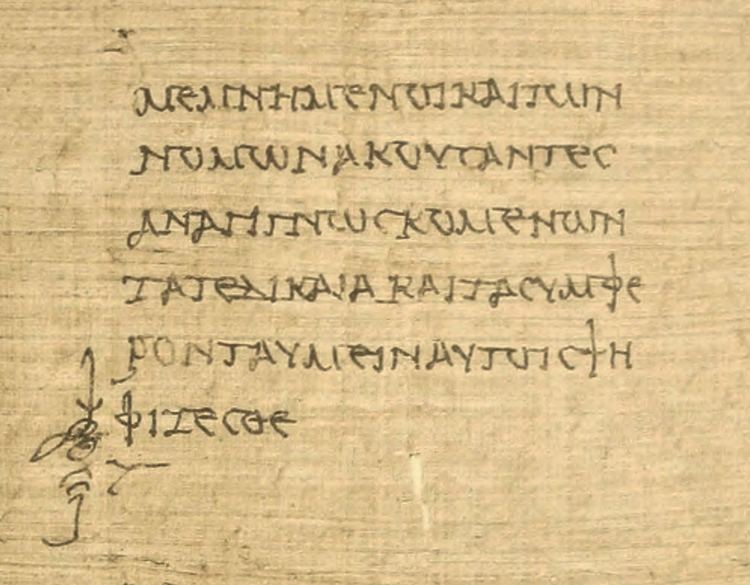 | ||
A coronis (Ancient Greek: κορωνίς, korōnís, κορωνίδες, korōnídes) is a textual symbol found in ancient Greek papyri that was used to mark the ends of entire works or major sections in poetic and prose texts. Coronides were placed most often in the left-hand margin of the text and were generally accompanied by a paragraphos or forked paragraphos.
Etymology
Liddell and Scott's Greek–English Lexicon gives the basic meaning of korōnis as "crook-beaked" from which a general meaning of "curved" is supposed to have derived. Pierre Chantraine concurs and derives the word from κορώνη (korōnē), "crow", assigning the meaning of the epithet's use in reference to the textual symbol to the same semantic range of "curve". But, given the fact that the earliest coronides actually take the form of birds, there has been debate about whether the name of the textual symbol initially referred to use of a decorative bird to mark a major division in a text or if these pictures were a secondary development that played upon the etymological relation between korōnē, "crow", and korōnis, as in "curved".
